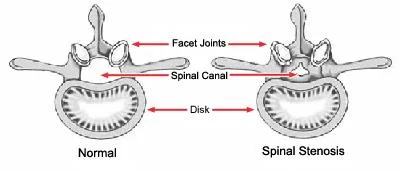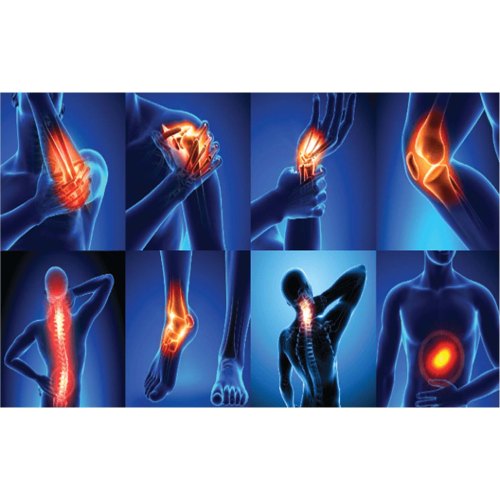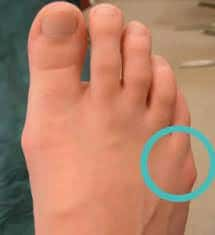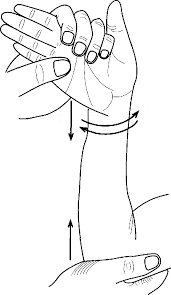ENCEPHELITIS
Table of Contents
DEFINATION:
Encephalitis (en-sef-uh-LIE-tis) is inflammation of the brain.Encephalitis often causes only mild flu-like signs and symptoms — such as a fever or headache — or no symptoms at all. Sometimes the flu-like symptoms are more severe.
Encephalitis often causes only mild flu-like signs and symptoms — such as a fever or headache —or no symptoms at all. Sometimes the flu-like symptoms are more severe. Encephalitis can also cause confused thinking, seizures, or problems with senses or movement.
Rarely, encephalitis can be life-threatening. Timely diagnosis and treatment are important because it’s difficult to predict how encephalitis will affect each individual.
Symptoms
Normal vs. abnormal soft spots (fontanels) of a baby’s skull
Bulging fontanel Most people with viral encephalitis have mild flu-like symptoms, such as:
1)Headache
2)Fever
3)Aches in muscles or joints
4)Fatigue or weakness
- Sometimes the signs and symptoms are more severe, and might include:
1) Confusion, agitation, or hallucinations
2) Seizures
3) Loss of sensation or paralysis in certain areas of the face or body
4) Muscle weakness
5) Problems with speech or hearing
6) Loss of consciousness
7) In infants and young children, signs and symptoms might also include:
- Bulging in the soft spots (fontanels) of an infant’s skull
1) Nausea and vomiting
2) Body stiffness
3) Poor feeding or not waking for a feeding
4) Irritability
- When to see a doctor
Get immediate care if you are experiencing any of the more-severe symptoms associated with encephalitis. Severe headache, fever, and altered consciousness require urgent care.
Infants and young children with any signs or symptoms of encephalitis should receive urgent care.
Causes
The exact cause of encephalitis is often unknown. But when a cause is known, the most common is a viral infection. Bacterial infections and noninfectious inflammatory conditions also can cause encephalitis.
There are two main types of encephalitis:
1) Primary encephalitis. This condition occurs when a virus or other agent directly infects the brain. The infection may be concentrated in one area or widespread. Primary infection may be a reactivation of a virus that had been inactive after a previous illness.
2) Secondary encephalitis. This condition results from a faulty immune system reaction to an infection elsewhere in the body. Instead of attacking only the cells causing the infection, The immune system also mistakenly attacks healthy cells in the brain. Also known as post-infection encephalitis, secondary encephalitis often occurs two to three weeks after the
initial infection.
common viral causes
The viruses that can cause encephalitis to include:
- Herpes simplex virus (HSV). Both HSV type 1 — associated with cold sores and fever blisters around your mouth — and HSV type 2 — associated with genital herpes — can cause encephalitis. Encephalitis caused by HSV type 1 is rare but can result in significant brain damage or death.
- Other herpes viruses. These include the Epstein-Barr virus, which commonly causes infectious mononucleosis, and the varicella-zoster virus, which commonly causes chickenpox and shingles.
- Enteroviruses. These viruses include the poliovirus and the coxsackievirus, which usually cause an illness with flu-like symptoms, eye inflammation, and abdominal pain.
- Mosquito-borne viruses. These viruses can cause infections such as West Nile, La Crosse, St. Louis, western equine and eastern equine encephalitis. Symptoms of an infection might appear within a few days to a couple of weeks after exposure to a mosquito-borne virus.
- Tick-borne viruses. The Powassan virus is carried by ticks and causes encephalitis in the Midwestern United States. Symptoms usually appear about a week after a bite from an infected tick.
- Rabies virus. Infection with the rabies virus, which is usually transmitted by a bite from an infected animal, causes a rapid progression to encephalitis once symptoms begin. Rabies is a rare cause of encephalitis in the United States.
- Childhood infections. Common childhood infections — such as measles (rubeola), mumps and
- German measles (rubella) — used to be fairly common causes of secondary encephalitis. These
- causes are now rare in the United States due to the availability of vaccinations for these
- diseases.
Risk Factors:
Anyone can develop encephalitis. Factors that may increase the risk include:
1) Age. Some types of encephalitis are more common or more severe in certain age groups. In general, young children and older adults are at greater risk of most types of viral
encephalitis.
2) Weakened immune system. People who have HIV/AIDS, take immune-suppressing drugs or have another condition causing a weakened immune system are at increased risk of encephalitis.
3) Geographical regions. Mosquito- or tick-borne viruses are common in particular geographical regions.
4) Season of the year. Mosquito- and tick-borne diseases tend to be more common in summer in
many areas of the United States.
Complications
The complications of encephalitis vary, depending on factors such as:
1)Your age
2)The cause of your infection
3)The severity of your initial illness
4)The time from disease onset to treatment
People with relatively mild illness usually recover within a few weeks with no long-term complications.
Complications of severe illness
Inflammation can injure the brain, possibly resulting in coma or death.Other complications
varying greatly in severity — may persist for months or be permanent.
These complications can include:
1) Persistent fatigue
2) Weakness or lack of muscle coordination
3) Personality changes
4) Memory problems
5) Paralysis
6) Hearing or vision defects
7) Speech impairments
Diagnosis
your doctor will start with a thorough physical examination and medical history.
Your doctor might then recommend:
1)Brain imaging. MRI or CT images can reveal any swelling of the brain or another condition that might be causing your symptoms, such as a tumor.
2)Spinal tap (lumbar puncture). A needle inserted into your lower back removes cerebrospinal fluid (CSF), the protective fluid that surrounds the brain and spinal column. Changes in this fluid can indicate infection and inflammation in the brain. Sometimes samples of CSF can be tested to identify the virus or other infectious agent.
3)Other lab tests. Samples of blood, urine or excretions from the back of the throat can be tested for viruses or other infectious agents.
4)Electroencephalogram (EEG). Electrodes affixed to your scalp record the brain’s electrical activity. Certain abnormal patterns may indicate a diagnosis of encephalitis.
5)Brain biopsy. Rarely, a small sample of brain tissue might be removed for testing. Brain biopsy is usually done only if symptoms are worsening and treatments are having no effect.
Treatment
Antiviral drugs
Encephalitis caused by certain viruses usually requires antiviral treatment.
Antiviral medications commonly used to treat encephalitis include:
- Acyclovir (Zovirax)
- Ganciclovir (Cytovene)
- Foscarnet (Foscavir)
Some viruses, such as insect-borne viruses, don’t respond to these treatments. But because the specific virus may not be identified immediately or at all, doctors often recommend immediate
treatment with acyclovir. Acyclovir can be effective against HSV, which can result in significant complications when not treated promptly.
Antiviral medications are generally well-tolerated. Rarely, side effects can include kidney damage.
- Supportive care
People who are hospitalized with severe encephalitis might need:
- Breathing assistance, as well as careful monitoring of breathing and heart function
- Intravenous fluids to ensure proper hydration and levels of essential minerals
- Anti-inflammatory drugs, such as corticosteroids, reduce swelling and pressure within the
skull - Anticonvulsant medications, such as phenytoin (Dilantin), stop or prevent seizures.
Follow-up therapy
If you experience complications of encephalitis, you might need additional therapy, such as:
- Physiotherapy to improve strength, flexibility, balance, motor coordination, and mobility
- Occupational therapy to develop everyday skills and to use adaptive products that help with
everyday activities
- Speech therapy to relearn muscle control and coordination to produce speech
- Psychotherapy to learn coping strategies and new behavioral skills to improve mood disorders or address personality changes
Physiotherapy treatment
physiotherapy treatment is often needed for secondary complications to encephalitis such as: muscle weakness, poor balance, and co-ordination.
Treatment can include:
1) Strengthening exercises to help improve muscle function. This can be in the form of simple exercises such as sit to stand or walking. Your child may find these tasks difficult after having Meningitis.
2) Stretching exercises as your child may experience a stiff neck.
Balance exercises such as standing with their eyes closed, standing on a wobble board, or standing on one leg. This is important as they need balance for tasks such as walking, running, and cycling.
3) Co-ordination exercises such as catching balls, juggling, and kicking a football
*strengthening exercise
In the case of hemiplegia, cerebral palsy, encephelitis, etc severe spasticity will make movements impossible, these movements can be graded with voluntary motor control. While moderate spasticity will allow some slow movements but they will be performed with too much effort and abnormal coordination but fine movements of the limbs especially involving the distal portion will be difficult or impossible.
VOLUNTARY MOTOR CONTROL GRADING
1+ – Gravity eliminated plane with 1/3rd movement possible.
1++ – Gravity eliminated plane with 2/3rd movement possible.
1+++ – Gravity eliminated plane with full range of motion.
2+ – Against gravity 1/3rd movement possible.
2++ – Against gravity 2/3rd movement possible.
2+++ – Against gravity full range possible.
3+ – Against gravity with resistance 1/3rd movement possible.
3++ – Against gravity with resistance 2/3rd movement possible.
3+++ – Against gravity with resistance full movement possible.
4 – Skilled movement.
SYNERGY :Synergy patterns are abnormal ,stereotyped ,primitive ,mass movement pattern associated with spasticity and which can be triggered either reflexively and voluntarily. Synergy can be either flexor or extensor.They involve the action of certain muscles in combination that gives rise to abnormal pattern not useful for functional activities.
In hemiparesis there are some muscles which are always involved and which finally give rise to a peculiar abnormal mass movement pattern and attitude that is characteristic of many hemiparesis patient.The spasticity invariably affects the anti-gravity muscle for reasons not clearly understood.It is however presumed that this anti-gravity muscles are relatively more stretched than pro-gravity muscles in neutral position hence stimulating the stretch reflex giving rise to spasticity.
ABNORMAL SYNERGY IN UPPER AND LOWER LIMBS :
- Flexion synergy for upper limbs :Shoulder girdle retraction and elevation ,shoulder abduction external rotation,supination,flexion of elbow,wrist and finger flexion.
- Flexion synergy for lowr limbs :Hip flexion abduction and lateral rotation , knee felxion,dorsiflexion and inversion.
- Extension synergy – For upper limbs :Shoulder girdle protraction and depression,shoulder adduction,internal rotation,elbow extension,pronation,wrist and finger flexion.
- Extension synergy – For lower limbs :Hip extension,adduction,internal rotation,knee extension,ankle plantar flexion,inversion,and plantar flexion
- Thus is can observed that the following muscles does not take part in either of the synergies :
1)Lat dorsi
2)Teres major
3)Serratus anterior
4)Wrist and finger extensors
5)Ankle evertors
It is highly essential to understand that synergies are different from the abnormal attitude seen in a hemiparesis patient.The abnormal hemiplegic attitude is due to the combination of strongest component of the flexor and extensor synergy in both upper and lower limbs.
VOLUNTARY CONTROL GRADING FOR ASSESSING SYNERGY PATTERNS :
1) GRADE 0 : NO CONTRACTION
2) GRADE 1: FLICKER OF CONTRACTION PRESENT PRESENT OR INITIATION OF MOVEMENT
3) GRADE 2: HALF RANGE OF MOTION IN SYNERGY OR ABNORMAL PATTERN
4) GRADE 3: FULL RANGE OF MOTION IN SYNERGY OR ABNORMAL PATTERN
5) GRADE 4: INITIAL HALF RANGE IS PERFORMED IN ISOLATION AND THE LATTER HALF IN PATTERN
6) GRADE 5: FULL RANGE OF MOTION IN ISOLATION BUT GOES INTO PATTERN WHEN RESISTANCE IS OFFERED
7) GRADE 6: FULL RANGE OF MOTION ISOLATION AGAINST RESISTANCE
how to improve grade 0 to 5 ?
Facilitation and enhancement of muscle activity to achieve improved motor control are the key tenants to many of the techniques used in neurological rehabilitation, many of which also utilise neuroplasticity. The Rood Approach, theoretically based on the Reflex and Hierarchical Model of Motor Control, developed by Margaret Rood in the 1950s, provides the origin for many of the facilitation techniques used today in neurological rehabilitation today. Rood developed a system of therapeutic exercises enhanced by cutaneous stimulation for patients with neuromuscular dysfunctions. In addition to proprioceptive maneuvres such as positioning, joint compression, joint distraction and the general use of reflexes, stretch, and resistance, the greatest emphasis is given on exteroceptive applications such as stroking, brushing, icing, warmth, pressure, and vibration in order to achieve optimal muscular action.
- Tapping
“Tapping is the use of a light force applied manually over a tendon or muscle belly to facilitate a voluntary contraction”.
Tapping is used to assess reflex activity with a normal response being a brisk muscle contraction. Rood recommended three to five taps over the muscle belly to be facilitated.
- Brushing
Fast brushing, using a battery-operated brush on the skin overlying the muscle, is a therapeutic technique presented originally by Margeret Rood to facilitate movement responses and enhance static holding postural extensors.
There is limited research in terms of the effectiveness of brushing, its long term use, its continued effects or the required rate or duration of brushing or pressure to be applied.
- Cryotherapy-Brief
Ice can be used to facilitate a muscle response, which uses a combination of coolness and pain sensation to produce the desired response. - Passive Stretching – Fast/Quick
Stretch may be applied in a number of ways during neurological rehabilitation to achieve different effects. The types of stretching used include;
1)Fast / Quick
2)Prolonged
3)Maintained
When we look at the use of stretch for facilitation we employ a fast/quick stretch. The fast/quick stretch produces a relatively short-lived contraction of the agonist’s muscle and short-lived inhibition of the antagonist muscle which facilitates a muscle contraction. It achieves its effect via stimulation of the muscle spindle primary endings which results in reflex facilitation of the muscle via the monosynaptic reflex arc.
- Joint Compression
Joint awareness may be improved by joint compression which will lead to enhancing motor control. Receptors in joints and muscles are involved with the awareness of joint position and movement which are stimulated by joint compression. Joint compression can have both facilitatory and inhibitory effects.
Joint Compression of the joint surfaces facilitates posture extensors which are needed to stabilise the body. Compression can be applied slowly to inhibit muscle control or in jerky manner to facilitate muscle control. The application may be manually and/or by using weight bearing postures.
Joint compression can be achieved in two ways:
Light Compression: Normal body weight being applied through the long axis of the bone which is thought to inhibit (relax) muscle spasticity
Heavy Compression: Compression is greater than that applied by body weight which is thought to facilitate co-contraction at the joint undergoing compression
- Vestibular Stimulation
The vestibular stimulation technique is a proprioceptive unique sensory system with multi-sensory function. According to the type of stimulus we can use the vestibular system to achieve many treatment alternatives. - Total body inhibition can be achieved by slow rocking, slow anterior-posterior movement, slow horizontal movement, slow vertical movement and slow linear movement.
- Total body facilitation can be achieved by rolling patterns, a rocking pattern on elbows and extended elbows and crawling.
- Spinning induces tonal responses and causes a strong facilitation of movement through the overflow of impulses to higher centres.
- Facilitation of postural extensors is another effect of vestibular stimulation if it is used by a rapid way anterior-posterior or angular acceleration of the head and body while the child in prone position.
Inverted position is commonly used now to achieve a total body inhibition, while it may be used to increase to in certain extensors. - Vestibular stimulation is not widely used in neurological rehabilitation. The management of vestibular dysfunction is recognised as a specialist area within physiotherapy
- how to improve coordination and balance in enecephelitis?
Upper limb exercise
Finger-to-nose test – The shoulder is abducted to 90o with the elbow extended, the patient is asked to bring tip of the index finger to the tip of nose.
Finger to therapist finger: the patient and the therapist site opposite to each other, the therapist index finger is held in front of the patient, the patient is asked to touch the tip of the index finger to the therapist index finger.
Finger-to-finger test – Both shoulders are abducted to bring both the elbow extended, the patient is asked to bring both the hand toward the midline and approximate the index finger from opposing hand
Finger-to-doctor’s finger test – the patient alternately touch the tip of the nose and the tip of the therapist’s finger with the index finger.
Adiadokokinesia or dysdiadokokinesia – The patient asked to do rapidly alternating movement e.g. forearm supination and pronation, hand tapping.
Rebound phenomena – The patient with his elbow fixed, flex it against resistance. When the resistance is suddenly released the patient’s forearm flies upward and may hit his face or shoulder.
Buttoning and unbuttoning test.
- lower limb exercise
Walking along a straight line. Foot close to foot:In case of cerebellar lesion, there is deviation of gait
Rom-berg test: Ask the patient to stand with heels together. Swaying or loss of balance occurs while his eyes are open or closed.
- Stretching for better balance
Stretching might not be the first exercise you would consider, but it’s one of the most effective exercises for improving balance and coordination. It’s also easy for people of all physical activity levels. - Stretching can help improve your posture and prevent aches and pains associated with the disease. Gentle stretching can also help warm up muscles for movement. This is important if you’ve been inactive for a long period of time.
- Warming up and slowly moving your muscles will also help prevent torn muscles, strains, and sprains. Stretch after you wake up or after sitting for long periods of time. Seated stretching is easier and safer for beginners.
- Stretching exercise 1: hip marching
- Sit in a sturdy chair with your back touching the back of the chair.
- Place your hands comfortably on your legs.
- Slowly lift your left leg straight up, leaving the knee bent.
- Hold for a count of 5 (or as long as comfortable), and then return your foot to the floor.
- Repeat with the other leg.
Stretching exercise 2: arm punch
– Sit in a sturdy chair with your back touching the back of the chair.
– Place your hands comfortably on your legs.
– Lift your left arm out in front of you, making it parallel to the floor.
– Without moving your back off the chair, stretch your arm slightly forward.
– Hold for a count of 5 (or as long as comfortable), and then return your arm down to your leg.
– Repeat with the other arm.
Stretching exercise 3: arm overhead
– Sit in a sturdy chair with your back touching the back of the chair.
– Place your hands comfortably on your legs.
– Lift your left arm toward the sky, along your ear.
– Without moving your back off of the chair, stretch as tall as you can.
– Hold to a count of 5 (or as long as comfortable), and then return your arm to your leg.
– Repeat with the other arm.
Stretching exercise 4: cross body stretch
– Stand with your feet shoulder-width apart.
– Place your hands by your side.
– Slowly lift your arms out to the side. Form a long line from arm to arm through your shoulders.
– Take your left arm and reach across your body as far as you can.
– Hold for a count of 5 (or as long as comfortable).
– Return your left arm to the line.
– Take your right arm and reach across your body as far as you can. Hold for a count of 5 (or as long as comfortable).
– Place your hands back by your side.
Yoga for coordination
Much like stretching, yoga can help strengthen muscles and improve coordination. Additionally, yoga has been shown to increase cardiovascular health, reduce depression and anxiety, and increase relaxation.
Prevention
The best way to prevent viral encephalitis is to take precautions to avoid exposure to viruses that can cause the disease. Try to:
1)Practice good hygiene. Wash hands frequently and thoroughly with soap and water, particularly after using the toilet and before and after meals.
2)Don’t share utensils. Don’t share tableware and beverages.
3)Teach your children good habits. Make sure they practice good hygiene and avoid sharing
utensils at home and school.
4)Get vaccinations. Keep your own and your children’s vaccinations current. Before traveling,
talk to your doctor about recommended vaccinations for different destinations.
5)Protection against mosquitoes and ticks
To minimize your exposure to mosquitoes and ticks:
1)Dress to protect yourself. Wear long-sleeved shirts and long pants if you’re outside between dusk and dawn when mosquitoes are most active, and when you’re in a wooded area with tall grasses and shrubs where ticks are more common.
2)Apply mosquito repellent. Chemicals such as DEET can be applied to both the skin and clothes.To apply repellent to your face, spray it on your hands and then wipe it on your face. If you’re using both sunscreen and a repellent, apply sunscreen first.
3)Use insecticide. The Environmental Protection Agency recommends the use of products containing permethrin, which repels and kills ticks and mosquitoes. These products can be sprayed on clothing, tents and other outdoor gear. Permethrin shouldn’t be applied to the skin.
4)Avoid mosquitoes. Refrain from unnecessary activity in places where mosquitoes are most common. If possible, avoid being outdoors from dusk till dawn, when mosquitoes are most active.Repair broken windows and screens.
5)Get rid of water sources outside your home. Eliminate standing water in your yard, where mosquitoes can lay their eggs. Common problems include flowerpots or other gardening containers, flat roofs, old tires and clogged gutters.
6)Look for outdoor signs of viral disease. If you notice sick or dying birds or animals, report your observations to your local health department.
7)Protection for young children
8)Insect repellents aren’t recommended for use on infants younger than 2 months of age. Instead, cover an infant carrier or stroller with mosquito netting.
For older infants and children, repellents with 10 to 30 percent DEET are considered safe. Products containing both DEET and sunscreen aren’t recommended for children because reapplication — which might be necessary for the sunscreen component — will expose the child
to too much DEET.
Tips for using mosquito repellent with children include:
1)Always assist children with the use of mosquito repellent.
2)Spray on clothing and exposed skin.
3)Apply the repellent when outdoors to lessen the risk of inhaling the repellent.
4)Spray repellent on your hands and then apply it to your child’s face. Take care around the eyes and ears.
5)Don’t use repellent on the hands of young children who may put their hands in their mouths.
6)Wash treated skin with soap and water when you come indoors.







One Comment